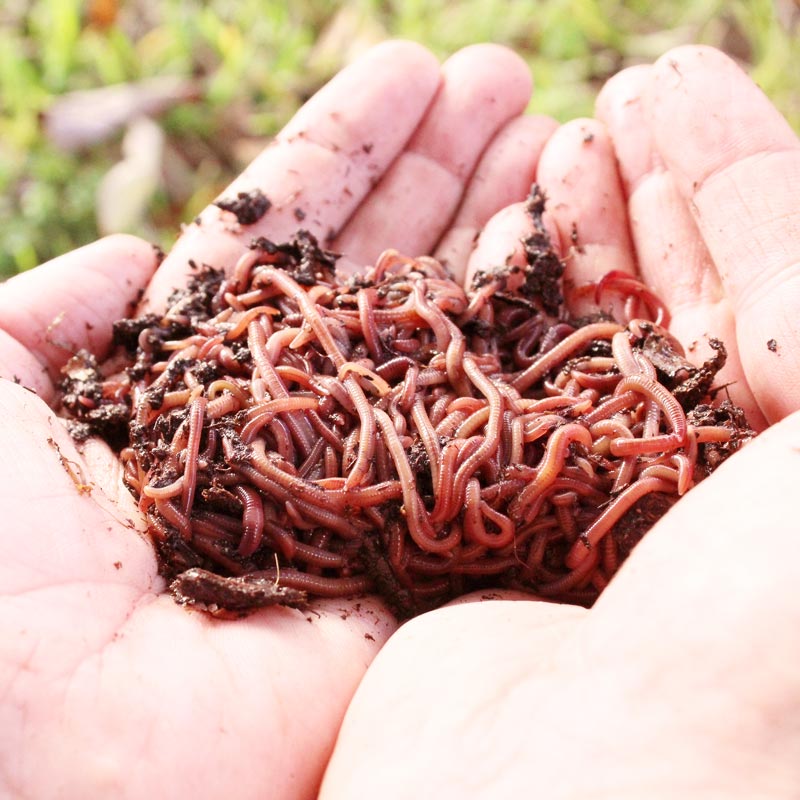Red Wiggler Worms Demystified: Opening the Secrets of Vermiculture for Greener Living and Nutrient-Rich Dirt
In the world of lasting techniques for improving dirt top quality and advertising eco-conscious living, red wiggler worms play a pivotal yet typically overlooked duty. Red Wiggler Worms. Understanding the ins and outs of caring for these worms, optimizing their atmosphere, and utilizing their castings can lead to a greener way of life and healthier dirt for plants to prosper.
The Function of Red Wiggler Worms
Red Wiggler worms play an important role in composting systems by efficiently damaging down raw material into nutrient-rich castings. These ravenous eaters eat a selection of natural products, such as cooking area scraps, backyard waste, and paper products. As they feed, the worms' digestion processes damage down the natural issue into a fine, dark, and nutrient-dense material referred to as worm castings or vermicompost.
The spreadings created by Red Wiggler worms are highly useful for soil health and plant development. They are abundant in essential nutrients like phosphorus, potassium, and nitrogen, which are crucial for supporting healthy plant development. In addition, worm spreadings consist of advantageous microorganisms and enzymes that help improve soil structure, boost water retention, and improve nutrient uptake by plants.
Advantages of Vermicomposting

Furthermore, vermicompost, the nutrient-rich final product of vermicomposting, functions as an exceptional organic fertilizer and soil conditioner. It enhances soil structure, improves soil aeration, and enhances dirt wetness retention. These homes add to much healthier plants with more powerful origin systems and better resistance to parasites and diseases. Vermicompost likewise enriches the dirt with crucial nutrients like potassium, nitrogen, and phosphorus, promoting plant growth and overall dirt fertility.
In addition, vermicomposting assistances lasting horticulture techniques by offering a all-natural and chemical-free option to artificial fertilizers. Red Wiggler Worms. This eco-friendly approach not just enriches the dirt yet likewise helps minimize dependence on unsafe chemicals, advertising a greener and a lot more lasting means of gardening
Establishing a Worm Bin
When developing a worm bin for vermicomposting, appropriate configuration is essential to ensure the success of the composting process. The very first step in establishing a worm container is picking an ideal container. This can be a plastic container or wood box that offers adequate space for the worms to move and has proper water drainage holes to avoid waterlogging. Next, a bed linens material such as shredded paper, cardboard, or coconut coir must be included in the container. This bed linen gives a comfy atmosphere for the worms and assists maintain wetness degrees.
After adding the bed linens, present the red wiggler worms to the container. The worms should after that be supplied their explanation with food scraps such as fruit and veggie peels, coffee grounds, and eggshells.
Regularly keep an eye on the dampness degrees and temperature level in the worm bin to guarantee optimum problems for the worms. With proper arrangement and maintenance, the worm container will properly convert organic waste into nutrient-rich compost for your plants and garden.
Collecting Worm Spreadings
To effectively collect nutrient-rich worm spreadings from your vermicomposting system, a systematic harvesting method is crucial. When it comes time to gather the worm spreadings, there are a few key actions to comply with to make sure a successful procedure. First of all, quit adding fresh food scraps away of the worm bin for a pair of weeks prior to harvesting. This urges the worms to move to the side with fresh bedding and food, making it simpler to dig the castings from the other side.

Troubleshooting Common Issues
Determining and addressing common challenges that may arise during the vermicomposting process is important for preserving a healthy and efficient worm container. One typical problem that vermicomposters experience is overfeeding. Adding excess food scraps can cause an accumulation of wetness and level of acidity in the worm bin, potentially damaging the worms. To avoid this, feed the worms in small amounts, making Full Article certain that the food scraps are adequately damaged down prior to including a lot more. An additional issue is unpleasant smells originating from the worm container. Foul smells indicate anaerobic conditions, normally caused by overwatering or poor ventilation. To treat this, change the moisture levels by adding dry bedding materials like shredded newspaper or cardboard and boost aeration by turning the bed linen consistently.
In addition, if the worm population is decreasing or the worms appear unhealthy, maybe as a result of environmental stress factors such as extreme temperature levels or pH levels. Checking these factors and making necessary changes is vital for the health of the worms. By troubleshooting these usual concerns without delay, vermicomposters can make certain a successful and smooth vermicomposting procedure while keeping a growing worm population.

Verdict
To conclude, red wiggler worms play an important role in vermiculture by breaking down natural matter into nutrient-rich soil. The benefits of vermiculture include greener living and improved dirt top quality. Establishing a worm container is important for effective vermiculture, and gathering worm spreadings supplies useful check out here compost for horticulture. By comprehending and repairing usual concerns, people can open the tricks of vermiculture for sustainable living and healthier soil.
As they feed, the worms' gastrointestinal procedures damage down the organic matter right into a fine, dark, and nutrient-dense material recognized as worm spreadings or vermicompost.
The spreadings produced by Red Wiggler worms are highly valuable for dirt health and plant growth. Adding excess food scraps can lead to a build-up of moisture and acidity in the worm bin, potentially damaging the worms.In addition, if the worm population is declining or the worms appear undesirable, it could be due to environmental stressors such as extreme temperature levels or pH degrees. Establishing up a worm bin is necessary for successful vermiculture, and gathering worm spreadings gives useful garden compost for horticulture.